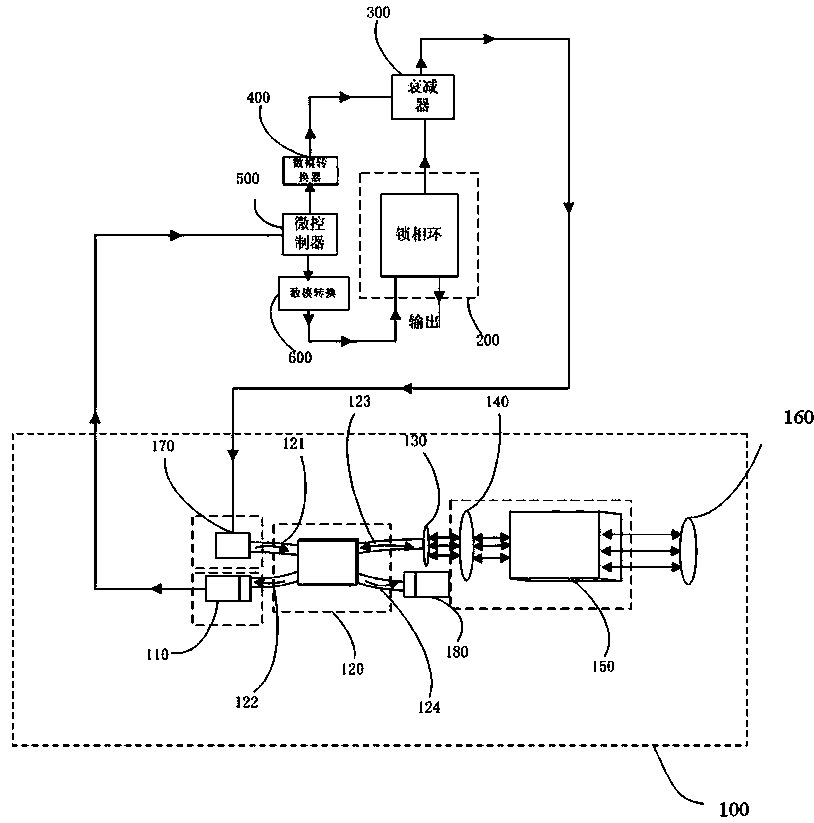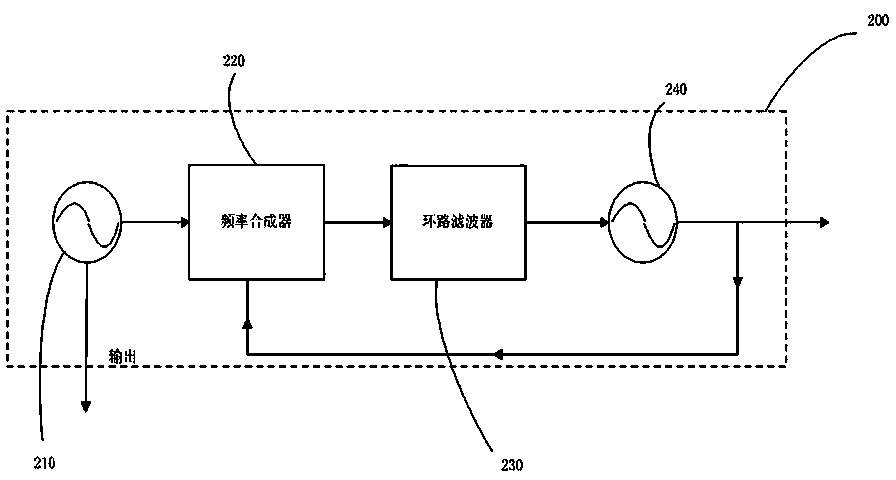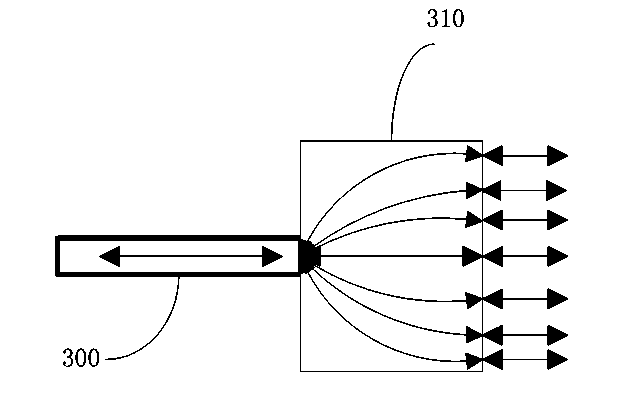Atomic clock
A technology of atomic clocks and atomic bubbles, applied in the field of atomic clocks, can solve the problems of high power consumption, temperature influence, no consideration of volume and power consumption, etc., and achieve the effects of reducing light loss, prolonging the action time, and improving stability
- Summary
- Abstract
- Description
- Claims
- Application Information
AI Technical Summary
Problems solved by technology
Method used
Image
Examples
Embodiment 1
[0033] Such as figure 1 As shown, an atomic clock with a self-focusing lens mainly includes a laser 170, a fiber coupler 120 and four optical fibers 121, 122, 123, 124 connected thereto, a self-focusing lens 130, a quarter-wave plate 140, Cesium cavity 150, AR film 160, photodetector 110 and second photodetector 180, phase-locked loop 200, electronically adjustable attenuator 300, micro-control system 500, digital-to-analog converter 400 and 600. Wherein the laser 170, the fiber coupler 120 and four optical fibers 121, 122, 123, 124 connected thereto, the self-focusing lens 130, the quarter wave plate 140, the cesium cavity 150, the antireflection film 160, the photodetector 110 and the second photodetector 180 constitute the physical package 100 of the atomic clock of the present invention.
[0034] The working principle of the whole system: the micro-control system 500 first initializes the phase-locked loop 200, so that the phase-locked loop is locked to the frequency of t...
PUM
 Login to View More
Login to View More Abstract
Description
Claims
Application Information
 Login to View More
Login to View More - R&D
- Intellectual Property
- Life Sciences
- Materials
- Tech Scout
- Unparalleled Data Quality
- Higher Quality Content
- 60% Fewer Hallucinations
Browse by: Latest US Patents, China's latest patents, Technical Efficacy Thesaurus, Application Domain, Technology Topic, Popular Technical Reports.
© 2025 PatSnap. All rights reserved.Legal|Privacy policy|Modern Slavery Act Transparency Statement|Sitemap|About US| Contact US: help@patsnap.com



